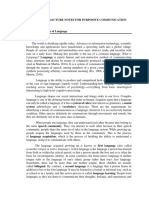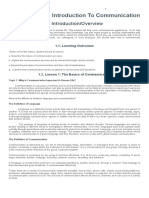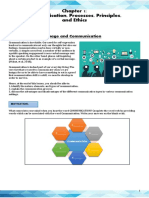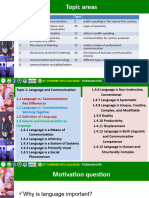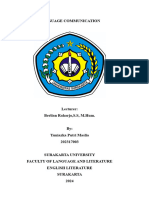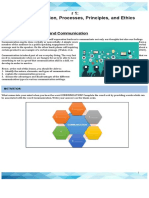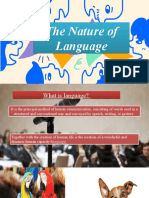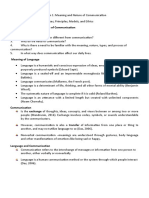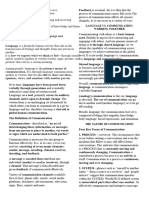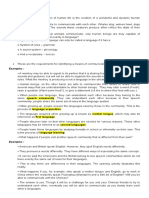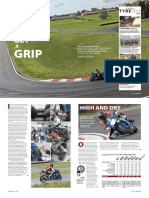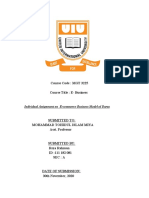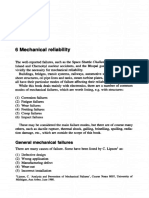0% found this document useful (0 votes)
7 views2 pagesLesson 1
This document discusses the nature of language and communication, defining language as a structured system for expressing thoughts and feelings through various means, while communication is described as the process of exchanging ideas and messages. It highlights the importance of both language and communication in human interaction and their dynamic nature. The document also outlines learning objectives and the characteristics of both language and communication.
Uploaded by
LJCopyright
© © All Rights Reserved
We take content rights seriously. If you suspect this is your content, claim it here.
Available Formats
Download as DOCX, PDF, TXT or read online on Scribd
0% found this document useful (0 votes)
7 views2 pagesLesson 1
This document discusses the nature of language and communication, defining language as a structured system for expressing thoughts and feelings through various means, while communication is described as the process of exchanging ideas and messages. It highlights the importance of both language and communication in human interaction and their dynamic nature. The document also outlines learning objectives and the characteristics of both language and communication.
Uploaded by
LJCopyright
© © All Rights Reserved
We take content rights seriously. If you suspect this is your content, claim it here.
Available Formats
Download as DOCX, PDF, TXT or read online on Scribd
/ 2





